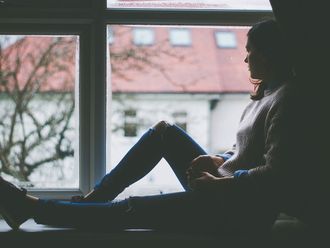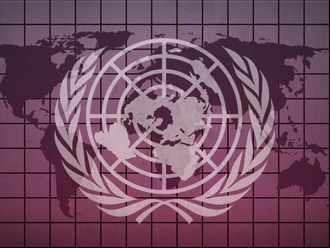The portrayal of a triumphant Chinese party elite is an overt display of democracy’s opposite without any hint of self-reproach. The new rulers of China seem to be telling the world that they really do not care what the world thinks of them. Flaunting a corporate and totalitarian style, they stand before an ugly pseudo-classical painting of a mountain range straddled by the Great Wall, forming their own human wall of dark-suited conformity.
The newly-chosen leader, Xi Jinping, in the centre of the row of sombre men, is introducing his government team in a ceremony at the Great Hall of the People in Beijing. As well as identical suits, they all wear red ties except Wang Qishan, who sports an individualistically blue tie. I’m worried about him. But as he is taking on the job of “discipline”, he will probably be all right.
Politically incorrect? Anti-China? Come on. This picture is funny. It is bizarre because it so casually refuses to play any game of western-style PR or political spin. You have to hand it to the Communist Party of China. It is honest. This official photograph reveals a regime with no interest in pretending to be any more democratic than it is. The message it sends out is: Don’t even think about democracy in China — we are so remote from that path, we don’t even contemplate pretending to consider faking it.
Presumably, this is political wisdom. The moment Mikhail Gorbachev started to make noise about reform in the erstwhile USSR, people demanded real change, real rights and the entire Soviet system was finished. One lesson of Russian history is that no reformist path actually exists for a Communist party that has brutally controlled a society for a long time. To soften is to invite revolution. Behind that happy picture of China’s new ruling order, millions of lives long for self-expression. Give them a millimetre and they would take revenge.
So in this picture, the new leadership of China affects a sameness and monotony worthy of an Ai Weiwei installation.
In his satirical and tragic art, the most trenchant critic of China’s government and way of life lays out identical elements in potentially infinite landscapes, using the language of minimalism to denounce totalitarian banality. Identical porcelain crabs, identical steel rods — although in truth each is different, as people are. In a video he shot on the streets of Beijing, Ai Weiwei reveals the monotony of its urban landscape after decades of Communist rule.
This photograph of a triumphant party elite displays the same monotony without satire, without irony, without any hint of self-reproach. The West has long since given up its Cold War rhetoric against Communism. The Cold War is ancient history and even US Republicans object more to China’s trading tactics than its system of government.
In short, the Communist Party of China is getting away with it. Little criticism has been expressed in the democratic world of a leadership selection process that has been an overt display of what democracy does not stand for. Regimented, taciturn, Orwellian images of China’s 17th Communist party congress have drawn little comment.
Meanwhile, we are all too ready to see the faults of democracy, from an MP taking time out in the jungle to American states vowing to secede.
Texas leaving the Union really would be a blow to democracy, but short of that it makes little sense for westerners to glorify Ai Weiwei without listening to what he says. Human rights are not relative, China is not some mysterious land that is “naturally” totalitarian.
That is how the men on this stage want you to see it. Relativistic notions that normal human beings have a passion for self-expression, self-government and freedom do not apply in China, suit the Chinese ruling order fine.
Note the vast Chinese landscape, the misty mountains and the epic Wall, begun by the first emperor of China more than 2,000 years ago. We are China, say these men, we are its past and future. And exhausted, penniless democracies nod a weary if-you-say-so.
— Guardian News & Media Ltd









